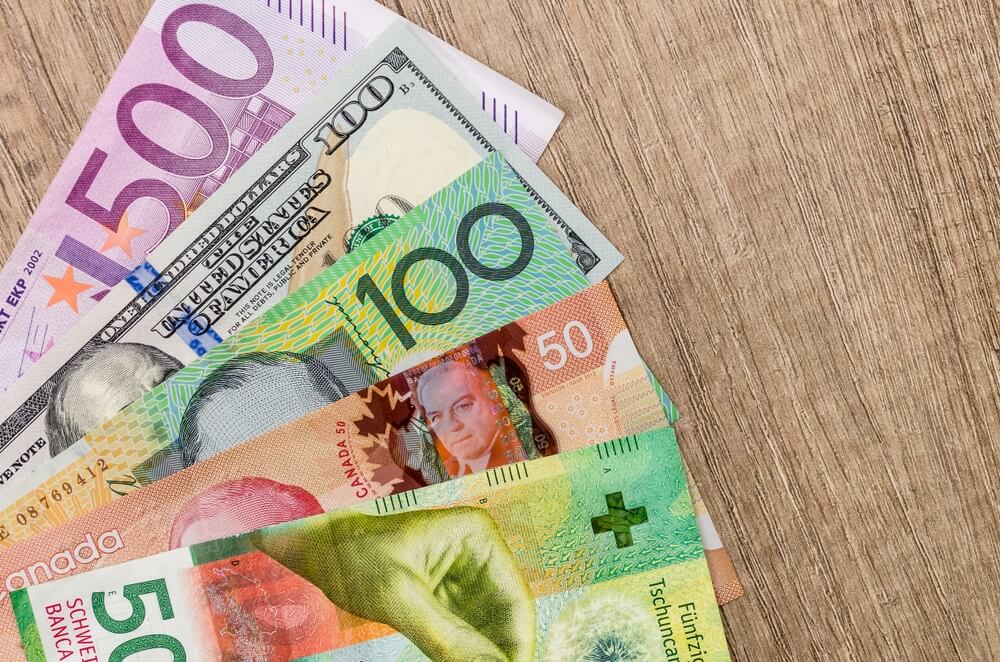
The Euro edged up while Swiss Franc hit a two-week high
The euro jumped on Thursday after trading in the red over the recent weeks. Traders priced in the chance of an aggressive tightening path by the European Central Bank in the near term. At the same time, the safe-haven greenback paused after adding substantial gains in the previous sessions. Forex markets are now pricing in approximately 105 basis points (bps) of ECB rate increases from around 95 bps on Tuesday. After ECB official Klaas Knot hinted a 50-basis-point rate increase was possible in July, the investors evaluated their bets.
However, U.S. currency markets are still discounting around 200 bps of Fed rate hikes by December of this year. Overall, risk appetite remains fragile as stocks decline, tracking Wall Street’s worst day since mid-2020. Warnings from some of the world’s biggest retailers also underscored how hard inflation weighs on the global economy. Despite that, some analysts took a more positive view of the economic stability, as well as riskier currencies. Expectations of easing restrictions in China are the main reason for their optimism.
The government gave Shanghai residents the freedom to shop for groceries for the first time in almost two months on Thursday. In addition, the authorities set out more plans for exiting the city-wide coronavirus lockdown more fully.
Matthew Ryan, the senior market analyst at Ebury, noted that he is relatively bullish on risk currencies against the dollar, including both the euro and British Pound. Ryan thinks market fears over global growth are excessive. Moreover, he believes that investors will see a significant rebound once they get to a stage where China begins materially unwinding its pandemic restrictions. The global economy will likely hold up slightly better than some economists expect this year.
Is the U.S. dollar gaining or losing now?
The dollar index tumbled down by 0.5% to 103.3 against the basket of six major peers after soaring by 0.55% on Wednesday. It may end this week with a three-day losing streak. However, George Saravelos, the global head of foreign exchange at Deutsche Bank, stated that a turning point for the greenback after recent gains is close. According to him, the market is now at a stage where a further deterioration in financial conditions undermines Federal Reserve tightening expectations. In addition, there is still significantly more tightening to be priced in for the rest of the world, especially the eurozone.
On Thursday, the euro climbed up by 0.3% at 1.0488 against the U.S. currency. The Swiss Franc also gained 1% against the euro and the greenback. On Wednesday, Swiss National Bank president Thomas Jordan hinted that the SNB was ready to act if inflation continues rising. Thus far, the SNB has stuck to its ultra-loose policy. After that announcement, the Swiss Franc skyrocketed to a two-week high versus the dollar. It also hit a three-week high against the common currency, trading respectively at 0.9751 and 1.0227.
Furthermore, the Norwegian crown surged forward by 0.5% on Thursday. It has recently plunged to its lowest level since December 2021 against the euro and May 2020 versus the U.S. dollar. Norges Bank’s hawkish stance is under-priced by the market, – noted BofA analysts. They have a constructive view of oil prices as the latter have a high positive correlation with the currency. Besides, concerns about China will likely fade towards year-end.
What is the forecast for the Japanese Yen?
The Japanese yen lost ground against the dollar in March and April, and it has been rangebound recently. However, the currency rallied by 0.4% to 127.6 today. On Tuesday, the Bank of Japan announced that it intended to stick with its dovish stance, as well as maintain monetary stimulus. The bank aims to create sustainable increases in prices.
Ebury’s Ryan thinks there’s a potential for a rebound in the yen. Despite that, he took a bearish view in the medium term due to the divergence of monetary policy between the Fed and the Bank of Japan. Ryan noted that as long as concerns about inflation and a potential economic slowdown dominate the narrative, the Japanese currency could return as the favored, or at least one of the favored, safe-haven destinations among forex traders. Meanwhile, Robust economic data is fuelling expectations of monetary tightening in Australia and Canada. The Aussie and the Canadian dollar may end in the green in the coming days.


